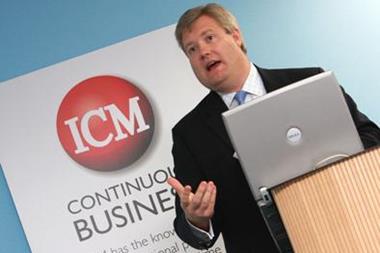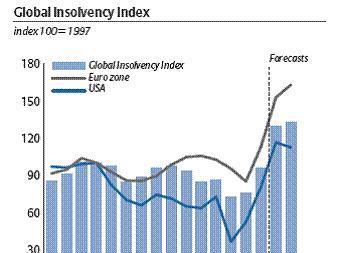is risk management being seen as an expendable cost? Or are the skills, tools and information at the disposal of the risk manager exactly what companies turn to?
The economic downturn creates two distinct short to medium term consequences for the role of the risk manager. The first is that risk management may be seen as an expendable cost, and that organisations take steps to reduce investment in it. This is no longer a speculative position – our firm is aware of several of Europe’s largest corporations taking steps to outsource functions within the wider risk management team, such as business continuity and health and safety, with the goal of creating short-term efficiencies.
The second potential outcome should provide risk managers with considerably more comfort. In a time of uncertainty, change and volatility, the skills, tools and information at the disposal of the risk manager should be exactly what companies turn to, to create reassurance and to take decisions with confidence. It is up to risk managers to use the exceptional circumstances we find ourselves in to trigger a review of risk in four connected areas.
Risk appetite/strategy
The rapid shift in corporate and consumer confidence, the weakening of balance sheets and the pressures on cash flow are all likely to have had an impact on a company’s risk appetite. Risk appetite should be the filter through which all subsequent decisions on risk are made. Risk managers should ensure that their companies have reached a consensus on their new risk appetite and have adjusted management focus and resources to match.
Many companies’ outlooks have shifted from long-term goals to short-term priorities. Risk management must make similar adjustments. If senior managers are reviewing business performance in a more regular, granular, fashion, risk managers must be prepared to generate management information more frequently than in a biannual presentation to the audit committee. Similarly, if organisations that previously ran a decentralised operating model decide to take more central control, risk
management must make similar demands on the business units around risk. Our firm is aware of a number of risk managers whose own personal profile has grown over the last year, as a result of being asked to join planning meetings and to provide a risk perspective on changing corporate strategy.
Risk profile
Over the past 12 months, most companies have made adjustments to their size, structure or strategy. Changes in any of these areas will have impact on risk profile. In some cases, companies will be required to address new risks. For example, a decision to outsource a back office function to make savings may introduce new operational, credit or reputational exposures. What is more likely, however, is that the profile of an existing risk simply becomes more significant as a consequence of either the current macro-economic environment, or a reduced tolerance for risk. This means that issues that were once insignificant rise in prominence.
One example of this, covered in the World Economic Forum’s (WEF) Global Risks 2009 report, is the slowing Chinese economy. When western firms first established supplier relationships with China, there was a recognised element of risk, seen by many to be outweighed by the rewards on offer. As the Chinese economy continues to slow, the WEF concluded that, should growth reduce to 6% or under, it would have a significant impact on the global economy, particularly when factoring in issues such as the fall in the US dollar, energy and food prices, and even health risks.
Risk managers should review risk registers as a matter of urgency, taking into account new threats, shifting priorities and their overall reduced tolerance to risk.
“Risk managers should review risk registers, taking into account new threats, shifting priorities and their overall reduced tolerance to risk
Risk management
The ability of a company to raise capital is increasingly contingent on being able to demonstrate effective governance. In a period where growth is far less commonplace among companies, the investment community is looking for reassurances that risk is being monitored and managed. For the first time, credit rating agencies are evaluating the strength of a company’s risk management as a measure of their overall governance. In this environment, risk managers should be encouraging their firms to review the adequacy of their risk management. With the growth in regulation and codes, it is now easier for risk managers to evaluate the extent to which their processes and systems meet best practice.
A further consideration for risk managers should be the effectiveness of their supply chain risk management and business continuity arrangements. As companies place greater reliance on critical suppliers and customers, with fewer margins for error and the very real possibility that firms may go out of business, it could be that existing plans fail to provide adequate resilience.
Risk financing
Macro-economic conditions call for micro-economic action. Any company not now reviewing its risk financing strategy may be missing the opportunity to release capital in their businesses.
If a company has removed an element of risk from its operations – by reducing in size, changing its strategic focus, or improving the quality of its control environment – this may instil the confidence to take more risk. This in turn may lead to savings on transferred risk (insurance) and the ability to use capital reserved for losses to build the business, should they fail to materialise.
Risk managers can play a pivotal role in decisions in this area, helping their companies to understand what an optimum blend of retained, transferred and financed risk looks like, and effectively transforming risk into a source of capital, above debt and equity.
Postscript
Richard Waterer is a senior vice president with Marsh Risk Consulting, E-mail: richard.waterer@marsh.com




















No comments yet